SF Grocers Report: Beef & Pork Fail to Disclose Drug Use

Do your favorite meat brands use antibiotics? If so, how much? Will your grocery store help you find out? A groundbreaking report from San Francisco’s Department of the Environment reveals that beef and pork brands sold by major grocery chains in the city have failed to disclose basic information about drug use—and some may not even know the answers.
Overuse of antibiotics in livestock production spurs growth of antibiotic-resistant bacteria, making some infections harder to treat in humans. At least 2 million people in the U.S. contract antibiotic-resistant infections each year, and up to 162,000 die. Unchecked, antibiotic resistance will continue to expand dramatically, threatening modern medicine as we know it. As the buyer of about two thirds of the medically important antibiotics sold in the U.S., the meat industry plays an outsized role in this public health crisis.
In 2017, recognizing that federal oversight of livestock antibiotic use has been insufficient to curb resistance, San Francisco stepped in to the fight. The city’s first-in-the-nation Antibiotic Use in Food Animals Ordinance requires large grocery chains to report annually on the antibiotics used to produce the raw meat and poultry products they sell.
Grocers must report two types of antibiotic use information: policies (when and why antibiotics may be used) and actual numbers (quantities used). The first public report on this data shows that "antibiotic use in meat and poultry production is shrouded behind an industry-created veil, making it difficult for not only the public but grocers themselves to understand the practices behind the food they purchase.”
Silence on Beef & Pork Speaks Volumes, Especially in Contrast with Poultry
San Francisco’s report tells a disturbing story about the beef and pork industries’ use of antibiotics. As shown in the figures below, no grocer could provide antibiotic use numbers for the beef or pork products they sell (with the exception of two veal products), including products from industry giants Cargill, JBS, Tyson, and Smithfield. Answers to simple policy questions were also missing for many brands.
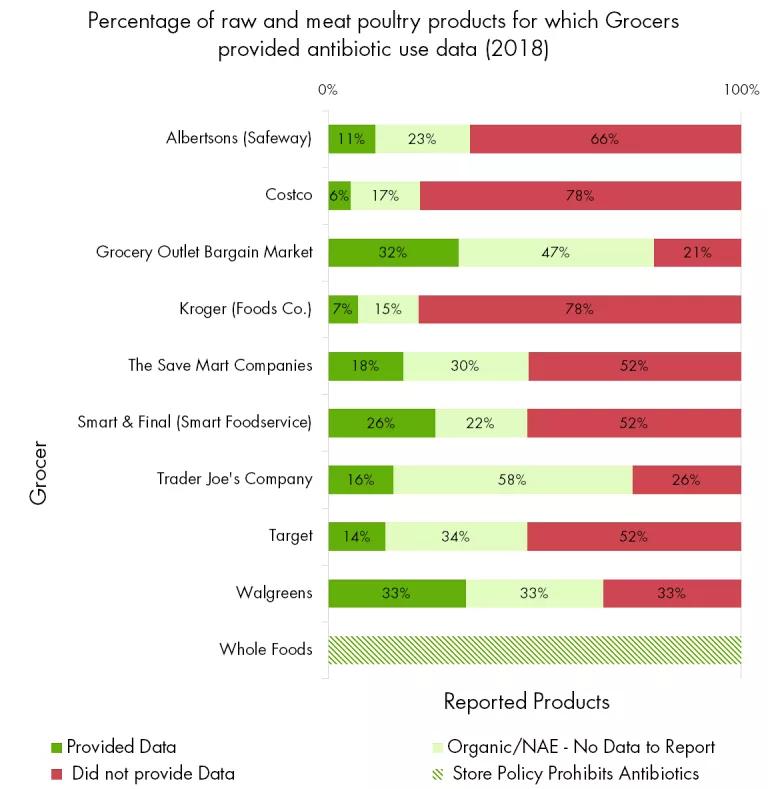
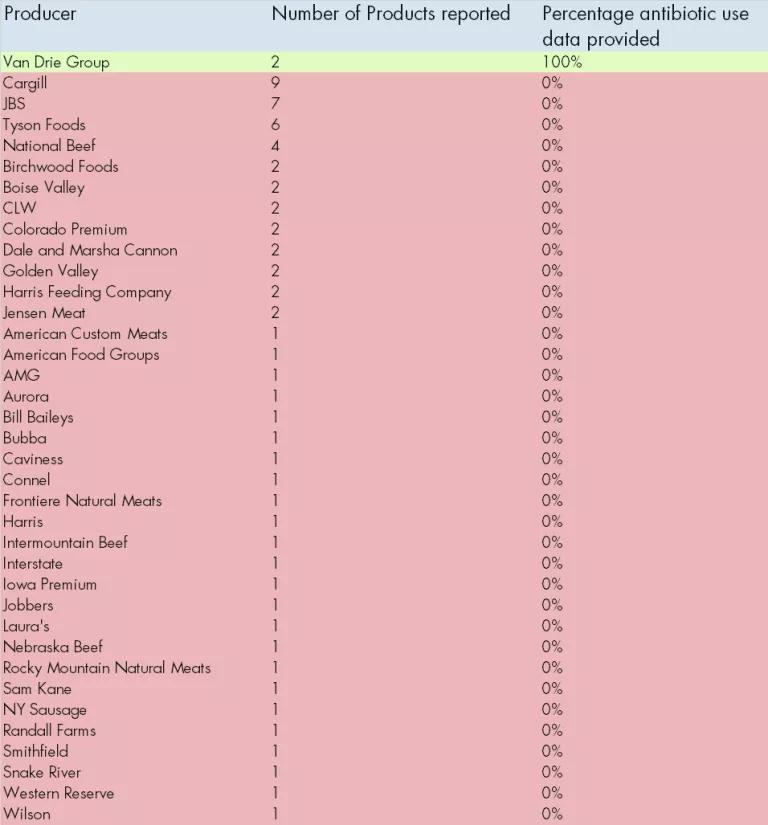
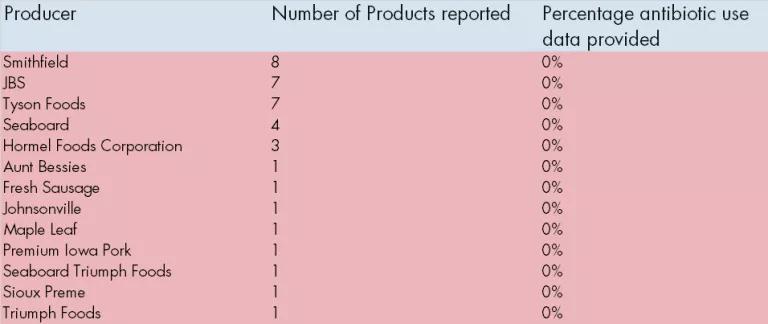
This lack of antibiotic use information for beef and pork is particularly concerning because over half of medically important antibiotics in the U.S. are sold for beef and pork production.
Fortunately, San Francisco’s report also demonstrates that major improvements to transparency are within reach. Antibiotic use numbers were reported for many chicken and turkey products, including full transparency for Foster Farms, Cargill, Perdue, Agricola Súper SA, Wayne Farms, and Amick Farms products (see figures below).
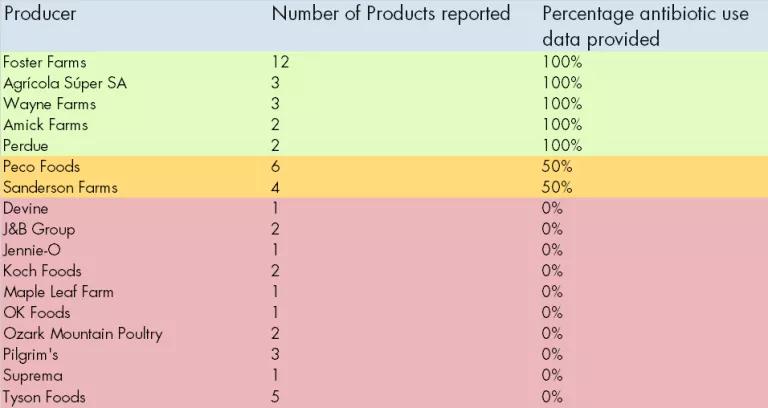

Strong Transparency for Several Grocers; Others Need Significant Improvement
Every grocery chain offered at least some transparency around antibiotic use policies (see figures below). Whole Foods leads the sector as the only chain with a comprehensive policy limiting antibiotic use. Kroger, Trader Joe’s, and Smart & Final offered near complete transparency, answering all policy questions for almost all the meat products they carry, including most of their store brand products. Target also responded completely to the policy questions for all its store brand products. San Francisco grocers with less transparency in their supply chains, and especially in their store brand products, should take note—we’re looking at you Costco and Safeway.
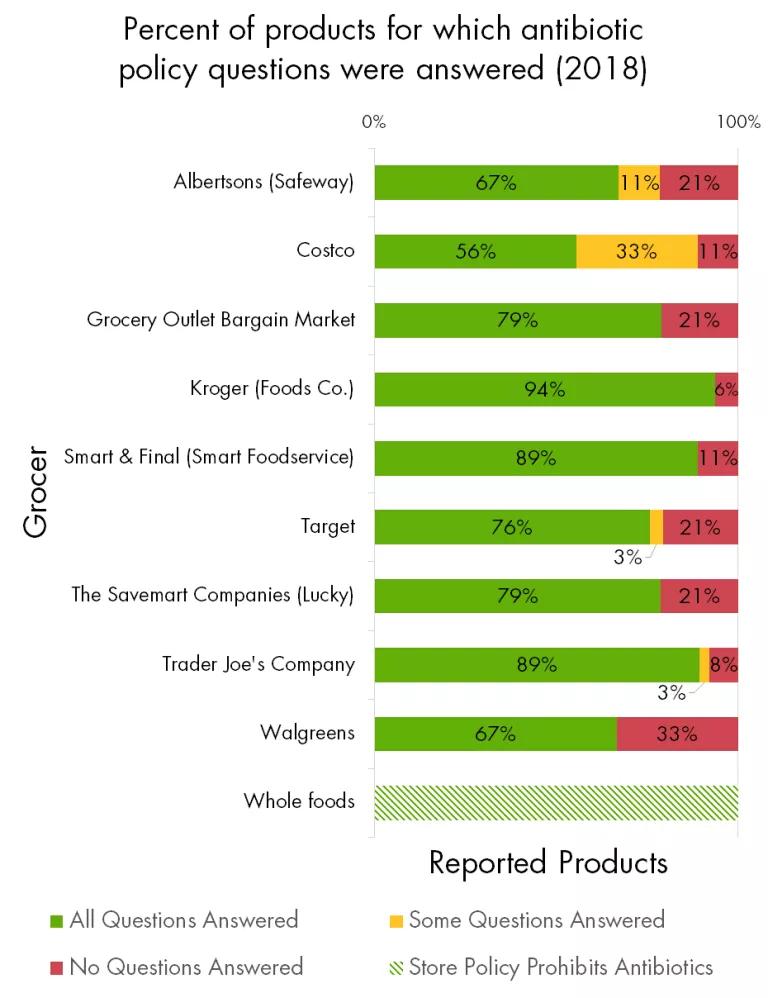
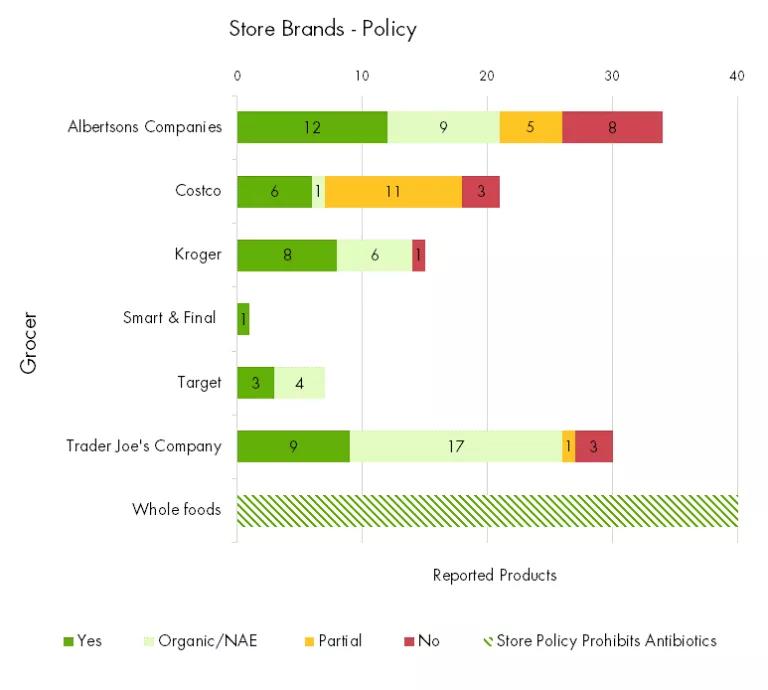
A similar reporting effort in Great Britain shows that San Francisco’s Ordinance could drive major policy change rapidly. In 2017, the Alliance to Save Our Antibiotics reported that no major British supermarket chain published antibiotic use data, and the report spurred a prompt response from industry. The second iteration of the Alliance’s assessment showed a dramatic shift—just two years later, eight of the ten top chains had an antibiotic use policy in place, and six of those chains had banned problematic routine use of antibiotics.
Several British chains now also publish antibiotic use data, which can be compared to national and international averages. Likewise, San Francisco’s effort to collect actual antibiotic use numbers will allow the public to compare U.S. practices with international leaders like the UK, Denmark, and the Netherlands.
Ripple Effect of San Francisco’s Leadership
San Francisco’s innovative use of local power has other jurisdictions excited to join the push for antibiotic transparency. Los Angeles County’s new sustainability plan addresses antibiotic use in its fair and sustainable food production strategy. And Seattle City Council member Teresa Mosqueda announced that antibiotic transparency is one of her priorities for 2020. As more jurisdictions urge transparency in antibiotic use, we’ll gain a clearer window into industry practices that will inform both consumer purchasing and future state and federal policymaking.

Now, more than ever, it’s clear that we need forward-thinking leadership and vigilance to protect public health. We commend San Francisco’s decision to prioritize this critical issue and its commitment and dedication to thorough and fair implementation of the Ordinance. As Jen Jackson, the city’s Toxics Reduction & Healthy Ecosystems Program Manager, notes, “Consumers have a right to know how antibiotics are used in meat production, and San Francisco will continue to help the public make informed choices.” We urge other cities to join San Francisco in the fight against antibiotic resistance, so our precious medicines work when we need them most.
This blog provides general information, not legal advice. If you need legal help, please consult a lawyer in your state.



